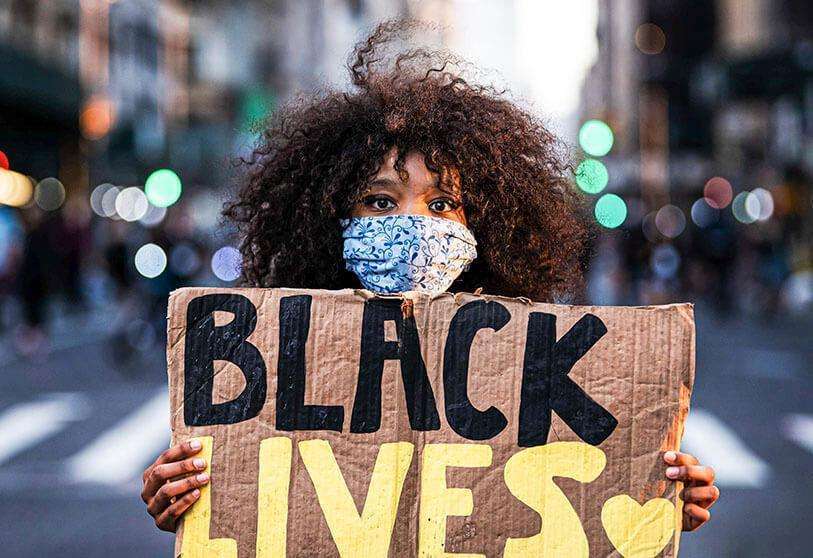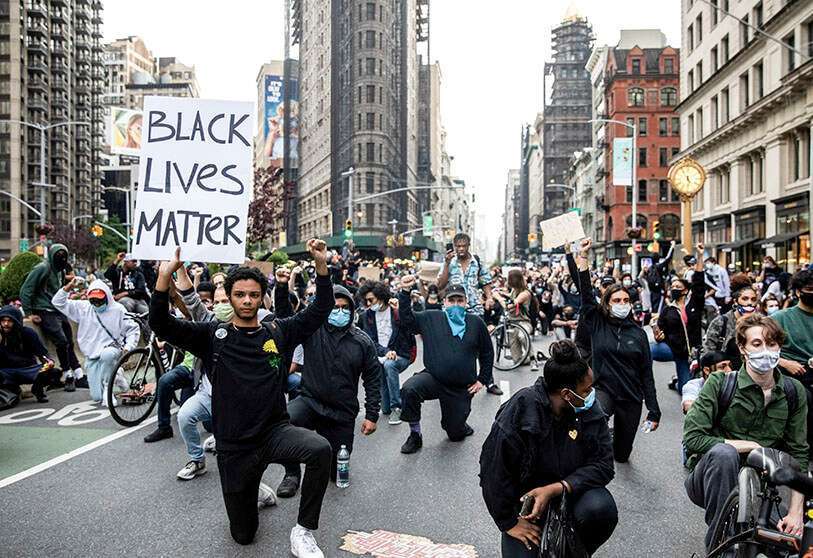Hate crimes and their different aspects

The injury to a person's dignity through actions involving humiliation, contempt or discrediting of any of the groups as defined in article 510.2.a of the Penal Code; this is what we mean when we talk about hate crimes, which have two basic elements: an incident and a motive based on different types of prejudice.
Despite the fact that hate crimes have a media impact and are not alien to the political debate, the fear of re-victimisation and silence accompany 80% of the people who have been physically or psychologically injured because they belong to a certain group.
Let's take a closer look at what they consist of.

"All human beings are born free and equal in dignity and rights and, endowed with reason and conscience, should act towards others in a spirit of brotherhood. This first article begins the Universal Declaration of Human Rights, adopted and proclaimed by the General Assembly in its resolution 217 a (III) of 10 December 1948.
The principle of equality is reflected in most national constitutions, but intolerance and discrimination remain social problems requiring continued intervention. However, the principle of non-discrimination is a negative principle: it prohibits justifiable inequality based on categories: race, religion, age, gender, sexual orientation, politics, ethnicity, nationality, physical description, sensory disability, mental disability, mental disability, illness, aporophobia, any other social or personal circumstance or condition. The action may also be directed at family, friends or groups, with the aim of frightening, inciting or discriminating against a person.
We know that prejudice and hatred of those who are different have been present since the beginning of time (Giménez-Salinas, E., Román, B., & García, M., 2003). Individuals ally themselves with groups for survival and identity issues, but when we see our wealthy position threatened, all defence mechanisms are set in motion. Thus, hatred for those who are different is based on fear and ignorance of the other's intentions for us.
Almost 73 years after the Universal Declaration of Human Rights, the evolution of criminal law with regard to hate crimes has been remarkable as far as the protection of the victim and the prosecution of the crime are concerned. However, in the last 25 years, a challenge has arisen that has taken a heavy toll on the work of protecting individuals and groups: the Internet.
According to the evaluation report on hate crimes in Spain (2019) 54.9% of hate crimes occur on the Internet followed by Social Networks with 17.6%.
The known and recorded facts point to 34.9% of hate crimes being ideologically motivated, 1.9% more than in 2018, closely followed by hate crimes on racial and xenophobic grounds, being 30.2% of the total recorded, and 20.9% more than in 2018.

There are many difficulties in investigating and prosecuting discriminatory acts and crimes committed because of irrational dislike and hatred of people (Para, R. E. D., & Equality, L. A. (2018). A Basic Guide to NON-DISCRIMINATION). This fact is of great relevance given that, if these obstacles are not known and properly channelled, the system of protection of the fundamental rights of citizenship is necessarily interfered with.
In the Spanish Penal Code, Article 510 refers to the direct or indirect promotion or incitement to hatred, hostility, discrimination or violence.
Therefore, the criminally relevant hate crime (Landa Gorostiza, 2018) aims to prohibit and criminally punish those actions aimed at inciting hatred against different collectives or individuals or direct humiliation and degradation.
An example can be found in the ruling of the National Court 2/2017, of 26 January (Criminal Chamber, section 4) where the author of different tweets was sentenced to 1 year and 6 months in prison (with a daily fee of 3 euros) and special disqualification on the part of the passive subject during the sentence. The publications on the social network Twitter were made specifically between December 2015 and January 2016.

"53 murdered by male gender violence so far this year, few appear with the number of whores that are loose"; "and 2015 will end with 56 murdered, it is not a good record but we did what we could, let's see if in 2016 we double the figure"; "I already have the explosives ready for tonight in the Plaza del Sol, happy new year, Ala es grande"; "Now all that's missing is an attack in Madrid with a few dead Spaniards and a great 2015"; "you don't see attacks like those of 11 September, these Jihad attacks are enough, if they are going to massacre people they should do it with style, Ben Laden is coming back"; "Beatriz was a feminist, and she jumped into the river because women get wet for equality"; "I like to fuck against the counter and the cooker, because I put women in their place for two reasons". Finally, publishing a photo of a woman, for whom it is not known whether she was a victim of violent abuse, she adds the slogan "I've already abused her, you're next" (Quoted in Legal Today, María Elduayen Ibáñez, 2018 on line http://www.legaltoday.com/).

The data analysed in the evaluation report on hate crimes in Spain (2019) indicate that, according to the records, men have suffered a higher rate of victimisation (1,081 compared to 597 hate crimes suffered by women, i.e. 64%) and the age range is between 26 and 40 years old, 30.1% of the total.
The distribution shows a higher percentage of male victims of "ideological" incidents and female victims of "racism/xenophobia".
As for minors, they make up 6.7% of the total number of victims registered in 2019.
Male individuals account for almost all of the arrests and investigations for "hate crimes or incidents" carried out by law enforcement agencies, with 83% of the total.
If we look at the age groups, most of the perpetrators of hate crimes or incidents are in the "18 to 40 years old" age bracket, accounting for 54.7%.
The lack of data on reported incidents is one of the main problems we encounter when assessing hate incidents or crimes, given the lack of publications with statistical data that would allow us to know their quantitative and qualitative dimension and taking into account the high black figure. The reason: lack of confidence in law enforcement and judicial procedures, fear of secondary victimisation; shame of having been aggravated for belonging to a particular group, fear of being expelled from the country; or simply not knowing where to go to report the incident, are the most frequent causes that justify the silence of the victims (AGUILAR, M., GOMEZ, V., Marquina, M., de LA ROSA, M. and TAMARIT, J., 2015). "Practical Manual for the Investigation and Prosecution of Hate Crimes and Discrimination".
Data from the European Fundamental Rights Agency (FRA) would place the black figure in this type of crime, with variations according to target groups at around 80% (Landa, J. M 2018). This statistical reality translates into the fact that victims are invisible, anonymous and, above all, lacking in assistance coverage.
Lourdes Fernández Manzano, criminologist and Full Stack Web developer, and collaborator of the Intelligence Analysis Area of Sec2Crime, where more information on hate crime prevention can be found.
● Ertzaintza. (2021). Retrieved from https://www.ertzaintza.eus/wps/portal/ertzaintza/
● European union agency for fundamental rights. (2019). Retrieved from https://fra.europa.eu/es
● Eusko Jaurlaritza. (2018). Informe de incidentes de odio de Euskadi. Vitoria: Departamento de seguridad del Gobierno Vasco.
● Eusko Jaurlaritza. (2019). Informe de incidentes de odio de Euskadi. Vitoria: Departamento de seguridad del Gobierno Vasco.
● Giménez-salinas, E. Román, B. García (2003) sociedad abierta y delitos de odio en la era de la globalización. EGUZKILORE Número 17. San Sebastián diciembre 2003 Pag. 121 – 132
● Landa Gorostiza, J. (2018). Los delitos de odio (1st ed.). Valencia: Tirant lo Blanc.
● Ministerio de Empleo y Seguridad Social. (2017). Recomendación de Política General no 15 relativa a la lucha contra el discurso del odio y Memorándum explicativo.
● Ministerio del interior. (2020). Informe sobre la evolución de los incidentes relacionados con los delitos de odio.
● Ministerio de Trabajo e Inmigración. Estrategia integral contra el racismo, la discriminación racial, la xenofobia y otras formas conexas de intolerancia. Edita y distribuye: Subdirección general de información administrativa y publicaciones Agustín Bethencourt, 11 28003. Madrid. NIPO: 790-11-186-4 Dep. Legal: M-4815-2011
● Observatorio vasco sobre acoso y discriminación. (2019). Retrieved from https://www.observatoriovascosobreacoso.com/
● Organización Mundial de la Salud. (2001). Conferencia mundial contra el racismo, la discriminación racial, la xenofobia y las formas conexas de intolerancia. Salud y ausencia de discriminación. 21546(2), 65.
● Sentencia de la Audiencia Nacional 2/2017, del 26 de enero (Sala de lo Penal, Sección 4ª)
● Tamarit Sumalla, Josep Maria (2018) Seminario sobre el suporte online a las víctimas de delitos. IDP. Revista de Internet, derecho y política, 2018, núm. 26, p. 102-103. 1699-8154

